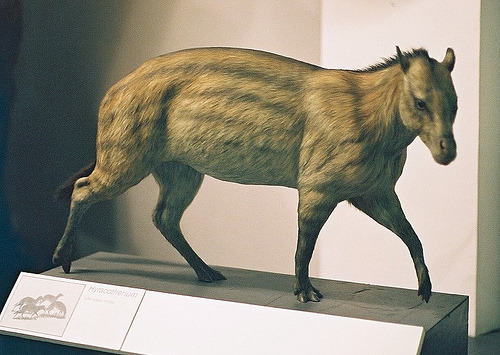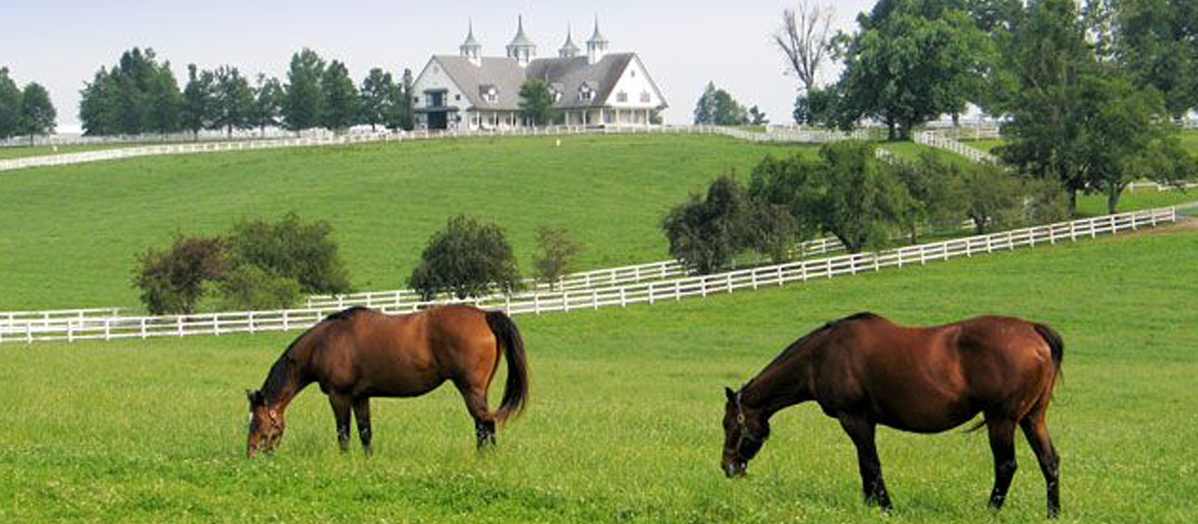365
Days in Horse Country – From Humble
Beginnings

It’s
difficult to believe that the modern day horse was once only the size of a
fox. That, at least, is the general
consensus among the scientific community who have studied the evolution of the
horse.
The horse has undergone incredible physical change over the past sixty million years. The very first horse was a creature called eohippus (also called hyracotherium). With four toes on the front feet and three in the back, eohippus grazed on the leaves of trees and brush, and occasionally ate fruits and nuts. It’s feet were suited for walking on the soft, leafy ground of the forests. Carnivores preyed on this early horse, including cat and dog like beats who also lived in the primeval jungle.
Scientists believe eohippus had a tawny coat with a spotted front and striped rear, making it harder for predators to see in the leafy forest. Its teeth were short in the crowns and long in the root. This eventually changed as horses began to graze in the open instead of eating leaves in the forest.
Over millions of years, eohippus evolved from having four toes in the front and three in the back to having one toe on each leg. Vestiges of the original toes can still be seen on all horses in the form of splint bones, chestnuts, and ergots.
Imagining life for eohippus gives us insight into the minds of modern horses. Although protected from horse-eating predators, today’s horses still retain the powerful instinct of wariness that enabled their ancestors to survive for eons.
Michael







